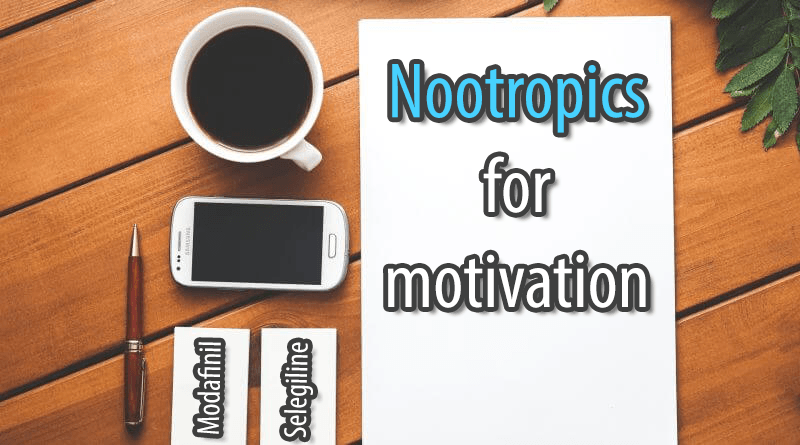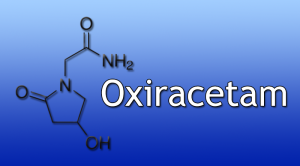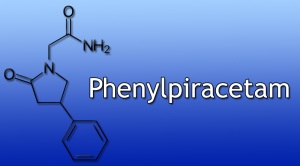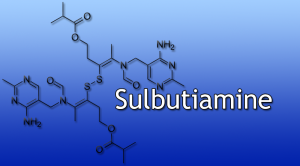Last updated on March 14th, 2020 at 07:36 pm
Motivation is a complex mental process that’s vital for productivity. Without it, you would probably only do the bare minimum to survive. But what if you want to thrive? Well then you need adequate motivation.
Now, most of us have an idea or a desire that we want to make come true. Despite this, we often just don’t feel like working towards it. Still, some of us may start working only to get paralyzed. To put it differently, it’s as though something is preventing us from actually being productive.
In essence, we need to turn motivation into action in order to be productive. However, this is easier said than done.
Table of Contents
What is Motivation
You may have heard of the saying that you don’t need motivation in order to do things. This isn’t necessarily true. In fact, rats without dopamine starve to death despite having easy access to food.[1][2] In other words, they don’t even have the motivation to eat. For this reason, it’s extremely important to have optimal dopamine levels.
For the most part, motivation and productivity can be broken down into 2 basic parts:
- Physiological – The brain has adequate dopaminergic neurotransmission to make you feel motivated and ready for action
- Psychological – The mind is disciplined and has the right conditioning to being productive
Think of motivation as a car and your drive as the gas for the car. If you are missing one or the other, the car will not move. For most of us, we are simply missing the drive or the gas. We have the goals in our heads and we want to work on them, but we simply lack the energy.
In particular, the psychological aspect can be quite hard to change. This is because some conditioning is often deep rooted in our fundamental sense of self and thus cannot be altered from a conscious level. In fact, it may take years of therapy to address it. However, the good news is that we can recondition the mind and let the new conditioning gradually displace the old one.
But this is a slow process. Luckily, this is where nootropics can be useful. Specifically, they can greatly speed up this process by changing your mind’s default response to being productive. Overtime, this reconditions the mind to responding in the way you want it to. For instance, without nootropics you may feel apathetic and lazy towards work whereas with nootropics you may feel ambitious and eager to start working.
Not surprisingly, if you found this article via Google then chances are your mind is ready to work but your brain is simply not cooperating with you.
In fact, if you suffer from any of these problems then you may find nootropics for motivation helpful.
- Fatigue and low mental energy
- Poor focus
- Frequent mind-wandering
- Feeling overwhelmed, even at the smallest of tasks
- Brain-fog
Summary
| Nootropic | Type | Usually Taken | Main benefit |
|---|---|---|---|
| Modafinil | Stimulant | Short-term | Wakefulness and energy |
| Uridine | Dopamine modulator | Long-term | Restoring the dopamine system |
| Oxiracetam | Stimulant | Long-term | Improving cognition |
| Phenylpiracetam | Stimulant | Long-term | Upregulating dopamine receptors |
| Sulbutiamine | Dopamine upregulator | Long-term | Increasing the feelings of reward |
| Selegiline | MAO-B Inhibitor | Long-term | Increasing baseline dopamine levels |
| Tianeptine | Antidepressant | Long-term | Decreasing depression-induced apathy |
| Cordyceps | Dopamine upregulator | Long-term | Improving brain health |
| Phenibut | Anxiolytic | Short-term | Decreasing worry and anxiety |
| Dopa Mucuna | Dopamine producer | Short-term | Boosting dopamine production |
Modafinil
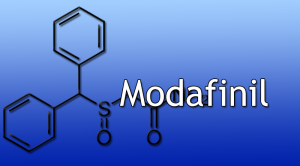
Modafinil is a nootropic that mainly improves wakefulness. In a way, it’s a bit like caffeine. But, it’s much more potent because it also increases dopamine levels among other neurotransmitters.
Originally marketed for sleep-disorders, it gained popularity when people realized it could improve productivity. Not surprisingly, they were right. Today, modafinil is one of the best nootropics for motivation. In fact, it’s often said to be like the limitless pill NZT-48. This is because people often report improved:
- Mood
- Focus and sustained attention
- Motivation
- Working memory
- Confidence
Also, it can even increase task enjoyment.[3] In other words, you’ll actually enjoy doing work. Additionally, it does this indiscriminately so even boring tasks may seem less arduous.
Modafinil like a better Adderall
When people are looking for a viable alternative to adderall, their first choice is usually modafinil. This because they have similar benefits. Namely, they both increase dopamine. However, modafinil does this by blocking the dopamine transporter. In turn, it prevents dopamine that has already been released from going down the drain. In other words, it allows dopamine to last longer. Consequently, this improves motivation specifically as a result of increased dopamine D1 activity.[4]
On the other hand, adderall indiscriminately forces dopamine to be released. Not surprisingly, this can have all kinds of side effects, including possible neurotoxicity.
Moreover, modafinil has been shown to improve cognition in healthy users.[5] By and large, modafinil provides many of the benefits as adderall.
But, modafinil is superior in that it has much fewer side effects compared to adderall. As a result, users typically report that it feels smooth and gentle, both when it starts working and when it stops.
In contrast, adderall users often feel obvious side effects. Furthermore, they usually also experience a crash.
Regardless, modafinil users often report feeling more motivated and upbeat. Effects which are similar to Adderall’s. Though, it’s without the feeling of being on a drug. Again, this is likely because of its smoothness and lack of obvious side effects.
Additionally, modafinil doesn’t have any risk of dependence nor withdrawal. Also the opposite of adderall, which carries significant risk of dependence and withdrawal.
All in all, modafinil is like a refined version of Adderall.
Modafinil combines well with caffeine
Caffeine is another nootropic that can improve motivation. And if modafinil alone isn’t really giving you the boost you need then you may want to consider combining it with caffeine. Fortunately, they’re highly synergistic with one another.
That is to say, caffeine’s mechanism of action complements modafinil’s. Specifically, caffeine increases the number of dopamine D2 and D3 receptors in the striatum.[8] And modafinil increases dopamine levels in this part of the brain.[9]
In brief, the striatum is a part of the brain that regulates planning, reinforcement, motivation, and reward perception.[10][11][12] It’s also a key part of the brain’s reward system. Thus, these two nootropics combined may increase motivation further than just taking them alone.
However, keep in mind that overstimulation may occur as a side effect. Because of this, you should consider taking L-Theanine alongside them. The reason being L-Theanine has calming effects. In fact, it’s often used to decrease agitation and anxiety caused by caffeine.
Finally, because of its unique profile and low side effects, modafinil may also combine well with other nootropics for motivation.
- Caffeine increases dopamine receptors in the striatum
- Modafinil increases dopamine levels in the striatum
- Overall dopaminergic activity goes up when caffeine and modafinil are combined
Modafinil can hinder your sleep
One bittersweet thing about modafinil is its long half-life. In other words, it lasts a really long time. In fact, its effects can persist for 12-15 hours.[7]
Though, this can either be good or bad depending on your situation and intent of use. On one hand, if you want to take a pill in the morning and have it last for most of your working day then modafinil is an excellent choice.
But, if you are feeling tired or unmotivated later in the day and want a pick-me-up pill then modafinil may not be the best option. The reason being it can harm your sleep.
Of course you can always use it to stay awake past your normal bed-time. But it is very important you don’t do this often. The reason being is sleep-deprivation directly harms cognition through multiple means. As a result, modafinil can only do so much. In short, it just can’t normalize every aspect of cognition.
Modafinil requires a prescription
Unfortunately, you can’t buy modafinil from legal nootropic stores. This is because it’s a scheduled drug and thus requires a prescription. But luckily adrafinil remains unscheduled. In fact, many nootropic vendors carry it.
Adrafinil is a pro-drug of modafinil. In other words, it gets converted in the liver into modafinil.
Uridine
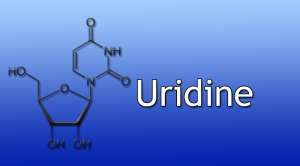
One of the most popular reasons why people take Uridine is to reset the dopamine system and consequently the reward system. Specifically, it appears to be able to influence some aspects of homeostasis. In other words, it may have an effect on restoring normal dopamine activity.
In particular, it’s useful as a recovery aid for stimulant abuse, which often throws the reward system out of balance.
Still, uridine can be helpful for anyone that’s just lacking drive and energy.
In fact, people who take Uridine often report these benefits:
- Uplifted mood
- Increased motivation
- Improved memory and learning
Uridine can restore the dopamine system
One of Uridine’s key benefits is its ability to improve dopaminergic neurotransmission. It does this via 2 ways:
However, it appears to mainly modulate the dopaminergic system. In short, it may improve dopamine activity when taken alone. Specifically by enhancing dopamine release and by increasing dopamine receptor density.
Additionally, it’s been shown to partially restore the dopamine system of rats with Parkinson’s disease.[39]
Uridine doesn’t combine well with stimulants
Unfortunately, uridine is one of those nootropics that just doesn’t work for some people. One possible explanation might be that they’re taking it incorrectly. In particular, uridine appears to not absorb well through oral administration.[17] For this reason, many people take it sublingually.
Furthermore, it can even have negative side effects. For instance, it doesn’t combine well with other dopaminergic nootropics.
This is because of its modulatory effects on the dopaminergic system. In short, it balances the system so that a stable baseline is reached.
On one hand, it can raise low dopamine activity back to normal levels. But on the other, it doesn’t combine well with nootropics that increase dopamine activity. In fact, it’s been shown to blunt them.[14]
Basically, uridine makes it so dopaminergic activity is neither low nor high. In a way, it raises the floor of how low dopamine can go but it also lowers its ceiling.
In truth, uridine is a great nootropic if you don’t plan on taking any dopaminergic nootropics.
Oxiracetam
Oxiracetam is a nootropic of the racetam class family. It’s notable for its mild stimulant effects. In addition, people who take oxiracetam often report:
- Improved memory and learning
- Enhanced focus
- Uplifted mood
- Enhanced senses – Particularly liking of music
Thanks to its sweet taste and water-solubility, it can be used a sweetener. For instance, with hot beverages like tea or coffee.
Because of this, you can condition your mind into getting in a motivated state. Particularly through associating its unique taste to a state of mind.
Now, whether you respond to oxiracetam or not is irrelevant. What’s important is that you take it with something you know motivates you, like adderall for example. In turn, the mind will slowly become conditioned to associate oxiracetam with motivation.
Oxiracetam is a mild stimulant
One oxiracetam’s key benefits is its mild stimulant-like effect. Though, it’s not as strong as other stimulants, like caffeine, but its effects are nonetheless noticeable. In fact, animal studies have confirmed that oxiracetam is indeed a stimulant.[18][19]
Most notably, it may have effects on dopamine and norepinephrine. This is based on a study that found it to reverse the effects of scopolamine on memory and acetylcholine levels. Specifically by interacting with dopamine and norepinephrine.[20]
Furthermore, the anti-psychotic haloperidol prevented oxiracetam from working in this regard.[20] Namely, haloperidol blocks dopamine receptors so this reinforces the hypothesis of oxiracetam’s dopaminergic effects. Though the exact mechanism behind its effects on dopamine remains to be discovered.
The Research is limited
Unfortunately, oxiracetam is one of those nootropics that just isn’t studied well. In particular, the research into its effects on humans is scarce. However, this is not to say that it’s dangerous by any means. But that there just isn’t enough evidence to verify its anecdotal effects.
Phenylpiracetam
Also known as Phenotropil in Russia, phenylpiracetam is notable for its potent, stimulant-like effects. In fact, it works so well that it’s in the World Anti-Doping Agency’s (WADA) prohibited list.
However, in this case it’s on the list specifically because it increases cold tolerance. Consequently, this is regarded as performance enhancement by the WADA.
Regardless, most users don’t have to worry about the WADA. In fact, most people who use phenylpiracetam do so for the following reported benefits:
- Reduced brain fog
- Increased energy and alertness
- Increased drive and motivation
- Enhanced creativity
- Enhanced physical stamina
- Improved tolerance to cold
Phenylpiracetam upregulates dopamine receptors
One of phenylpiracetam’s key effects is on the dopamine system. In particular, it appears to increase the density of dopamine receptors in the brain. Namely, the dopamine receptors D1, D2 and D3.[21][22] All of these receptors are involved in reward and motivation in one way or another.
Granted, the brain is complex and simply increasing the number of receptors isn’t guaranteed to improve overall dopaminergic activity and motivation. But, the plethora of anecdotes tells otherwise.
In truth, phenylpiracetam is one of the most popular nootropics available today specifically because it can improve motivation and productivity. In fact, many people take it solely for this reason.
Lastly, phenylpiracetam may synergize well with other nootropics for motivation. Mainly because a lot of them work by increasing dopamine levels rather than increasing dopamine receptor density.
Tolerance often develops
A major drawback of phenylpiracetam is that it cannot be used long-term. Not because it’s unsafe or expensive. But specifically because its effects diminish overtime.
In other words, tolerance happens. Furthermore, once tolerance sets in, it may take a long time to reset. In fact, some users have reported developing permanent tolerance.
One reason this might happen is due to its mechanism of action. Particularly because it increases the density of dopamine receptors. Consequently, this likely explains its stimulatory effect.
But the brain can easily adapt to this, even if the increase in dopamine receptors is permanent. In fact, the brain doesn’t even need to address the receptors but rather just decrease dopamine activity until it reaches baseline or homeostasis. Basically, baseline is what the brain interprets as normal.
Not surprisingly, there are many ways it can do this. For instance, it can decrease dopamine levels by decreasing dopamine production. Or it can simply decrease dopamine release. Whatever the case, the brain will try to regain homeostasis.
Sulbutiamine
A synthetic version of Vitamin B1 (Thiamine), sulbutiamine is commonly used to increase productivity.
Users often report these benefits:
- Reduced fatigue
- Improved mood
- Increased motivation
- Increased sociability
Sulbutiamine increases the amount of dopamine receptors
The most significant benefit of sulbutiamine is that it increases the amount of dopamine D1 receptors in the brain. Particularly in a part of the brain called the cingulate cortex.[23]
The cingulate cortex is a key part of the limbic system. Notably, this system plays an important role in regulating emotion and especially motivation. Specifically by turning motivation into action.[40]
Sulbutiamine takes a while to start working
One of the biggest problems with sulbutiamine is that you have to wait for it to start working. And in some cases, this can take weeks. Furthermore, its effects can be subtle and more of a background boost.
Though, it can combine well with other motivational nootropics for this reason. In addition, its unique mechanism of action makes it unlikely to negatively interact with them.
For these reasons, sulbutiamine may not be the best for those who want an immediate and strong boost to motivation. On the other hand, people don’t often report tolerance to its effects. In fact, the opposite often happens. That is to say it may have stronger effects the longer it’s taken.
However, this is just based on anecdotes and not research. So take it with a grain of salt.
Selegiline
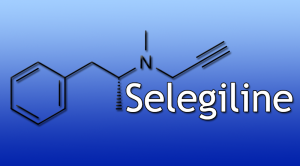
Also known as Deprenyl, it’s an irreversible MAO-B inhibitor that may increase motivation in some people. The brain is constantly producing and metabolizing dopamine. One way it metabolizes dopamine is via the enzyme called MAO-B. Short for monoamine oxidase type B, it binds to dopamine and destroys it. It also metabolizes phenethylamine (PEA), an endogenous amphetamine-like neurotransmitter.
To clarify, an irreversible MAO-B inhibitor binds to the MAO-B enzyme and permanently destroys it. However, this does not mean it results in a lifelong effect, but rather a long duration of action. It typically takes 2 weeks for MAO-B levels to get back to normal after discontinuing selegiline.[24][25]
Selegiline enhances dopamine activity
The brain is constantly producing and metabolizing dopamine. One way it metabolizes dopamine is via the enzyme called MAO-B. Short for monoamine oxidase type B, it binds to dopamine and destroys it. It also metabolizes phenethylamine (PEA), an endogenous amphetamine-like neurotransmitter.
Additionally, selegiline has been to shown to act as a catecholamine activity enhancer. Basically, whenever dopamine or norepinephrine is released, it boosts their effects.
Selegiline can be thought of as a subtle nootropic that enhances the effects of other dopaminergic nootropics. It’s not particularly stimulating on its own, but nonetheless may increase motivation in a subtle manner. Of course, there’s always a difference in how people react to nootropics.
For instance, some users report strong dopaminergic effects like improved:
- Libido
- Mood
- Confidence
- Motivation
- Desire to obtain money
In contrast, others only report subtle benefits. Furthermore, some people find it to have absolutely no effect whatsoever. In truth, the brain is complex and dopamine isn’t just broken down by MAO-B alone. In fact, MAO-A and COMT also play a role.[26][27]
It seems that those that benefit from selegiline have the optimal balance between MAO-A, MAO-B, and COMT for selegiline to produce its beneficial effects. In other words, they have the optimal genetics for getting the optimal benefits from selegiline.
That said, selegiline primarily increases dopamine in the striatum, a part of the brain that plays an important role in reward and motivation.[28][29][30] Because of this, it may combine well with other nootropics that enhance dopaminergic activity in that area. For instance, caffeine and modafinil both increase dopaminergic activity in the striatum.
However, it is important to keep the doses low to avoid over-stimulation and subsequently restlessness. Motivation is useless if you’re unable to sit down and focus on a task.
- Increasing baseline dopamine levels
- Increasing phenethylamine levels
- Acting as a catecholamine activity enhancer
Selegiline blunts phasic dopamine
There are 2 basic types of dopaminergic neurotransmission:
- Tonic – Background activity
- Phasic – Burst activity; this basically ripples from neuron to neuron
Basically, phasic activity occurs when an emotional response happens, like excitement for example.
Likewise selegiline has been shown to decrease the rewarding feelings of dopaminergic substances. For instance, it blunts the euphoria from methylphenidate.
As mentioned earlier, selegiline increases baseline dopamine levels. In other words, it increases tonic dopaminergic neurotransmission. Unfortunately, this also means it blunts phasic dopamine as a result.
In particular, tonic levels appear to regulate the intensity of phasic firing.[41] Consequently, higher tonic activity means lower phasic activity.[42]
Tianeptine
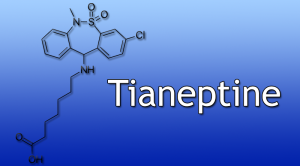
Mood often has a significant influence on our motivation and how we feel about doing work. In fact, when we’re feeling down or just a bit off, motivation is usually one of the first things to go out the window. Plus, it’s typically resistant to traditional means of increasing motivation. For instance, caffeine and even adderall can have little to no effect.
For this reason, it’s important to ensure your mood is optimal. Specifically, you want to be as open as possible to the idea of work. Ideally, your mood should lean towards the positive side rather than the negative. This is where tianeptine comes in.
Originally thought to be a serotonin reuptake enhancer, it is now known that Tianeptine works by altering glutamate activity.[31][32]
In short, tianeptine is often used to improve mood. In particular, people who take tianeptine often report having:
- Decreased fear and worry
- Increased motivation
- Enhanced focus
- Decreased negative thoughts
Tianeptine enhances dopaminergic activity
One of the key areas in the brain responsible for motivation is the nucleus accumbens. In particular, it plays an important role in reward, pleasure, reinforcement, and overall motivation.[35][36][37] Notably, tianeptine has been shown to increase dopamine release in this area of the brain.[33] Additionally, it’s also been shown to increase dopamine D2 and D3 sensitivity in this part of the brain which may further boosts its effects.[38]
Consequently, motivation and feelings of reward may increase. In fact, the desire for obtaining money is directly linked to activation of the nucleus accumbens.[43]
Furthermore, it also seems to increase dopamine in the frontal cortex.[34] In effect, this may improve executive function, attention, planning, and even memory. This is because the frontal cortex plays an important role in all these areas.
Ideally, you want to have a sense of direction when feeling motivated otherwise you may just waste your time mindlessly doing all kinds of things. Remember that if you fail to plan you plan to fail. So by improving executive function, tianeptine may improve your ability to plan your goals.
Lastly, tianeptine may be synergistic with other nootropics for motivation. Specifically because it increases dopamine sensitivity and because of its unique mechanism of action.
Tianeptine is hard to find
Unfortunately, tianeptine has been getting harder and harder to find online. In fact, most nootropic stores no longer carry it. Well, reliable ones at least. Furthermore, if a vendor does carry it then it’s likely to be in capsuled form rather than powder.
The reason being is that tianeptine has mild opiate properties. As such, some people thought it would a good idea to abuse it. Specifically by taking dangerously high doses in order to get high.
Not surprisingly, the FDA took notice and started getting stricter on how stores can sell tianeptine. As a result, most nootropic vendors just stopped selling it altogether.
However, Nootropics.com still carries it and they’re definitely reliable. But it’s only in capsuled form.
Cordyceps
Cordyceps is a mushroom that is often used for its nootropic effects. Among the many useful benefits of cordyceps is its ability to improve focus, energy and mood.
Cordyceps increases dopaminergic activity
Research has found that cordyceps can increase dopamine via 3 ways.
First, it enhances the level of tyrosine hydroxylase (TH) in the brain.[44] This enzyme is known as the rate-limiting step to dopamine production. In other words, it can be thought of as a bottleneck to dopamine. The more TH you have the more dopamine you produce and vice-versa.
Second, cordyceps modulates an enzyme known as MAO-B. Short for monoamine oxidase type B, this is one of the key metabolisers of dopamine, noradrenaline, and phenethylamine (PEA). As we age, MAO-B levels increase and subsequently all those neurotransmitters decrease. Luckily, cordyceps has been shown to lower the MAO-B levels of aged rats back to that of young rats.[45]
Finally, it has an antidepressant-like effect that’s dependent on dopamine and noradrenaline. Specifically, it increases the activity of these 2 neurotransmitters.[46] But the exact mechanism behind it is not yet known.
- Increases dopamine production
- Decreases or at least normalizes dopamine breakdown
- Enhances dopamine and noradrenaline activity
Cordyceps is immunosuppressive
One of the reasons why people use Cordyceps is to boost their immune system. Indeed, some studies have found it can improve the immune system. But this appears limited to immunosuppressed subjects.[47] On the other hand, it also has immunosuppressive properties.
So it has what seems to be 2 contradicting effects. In truth, its effects vary depending on the condition of the immune system. Thus, it might be an immunomodulator.[48] In other words, it may only improve the immune system when it’s needed. Likewise, it may weaken it in other situations.
Though, the current research isn’t conclusive. Moreover, it appears to be leaning towards the suppressive side.[49] Indeed, it’s been used to improve organ transplant rejection with good success rates.
In fact, it’s often combined with cyclosporine, a potent immunosuppressant. And with Cordyceps, the effective dosage of cyclosporine can be drastically lowered.[50]
Phenibut
One of the most popular nootropics, phenibut is commonly used to improve productivity. In particular, it’s most helpful for presentations, job interviews, and other activities which put you into the spotlight. This is thanks to its relaxing effects not only on the body but also the mind. Specifically, it tends to reduce worry and anxiety.
Additionally, some users find it acts in a similar manner to Alcohol but without the intoxication. So in a way it can disinhibit your roadblocks of motivation.
Benefits of phenibut
- Mild increase in dopamine levels
- Improved motivation
- Decreased anxiety and tension
Phenibut can reduce blockades of motivation
Anxiety is often a big roadblock of motivation. In fact, negative self-views like self-doubt can significantly affect your productivity. And this is irrelevant of how strong your motivation is.
Put briefly, your mind will be in a conflict with itself. On one hand you’ll have a sub-mind full of energy and motivation to succeed. On the other, a few sub-minds will be full of doubt, worry, and fear.
Of course, you could always purify the negativity by simply not identifying with it. However, this is easier said than done. In this case, these are essentially 2 different selfs: your motivated self and your worried self.
Not surprisingly, these 2 selfs contradict each other. Consequently, tension and even procrastination are born out of this battle. In fact, this likely explains why you often know what you have to do but just can’t seem to get started. It’s like there’s something invisible keeping you chained up and unable to act or move. Now, this is where phenibut can be helpful.
Specifically, it’s been shown to decrease anxiety and worry. As a result, tension in both the mind and body may decrease.[51]
Furthermore, phenibut may have some dopaminergic properties. For instance, it’s been found to augment the effects of antiparkinson drugs, which primarily work by increasing dopamine.[52] Additionally, it can increase dopamine levels at low doses, which results in mild stimulation and some anti-anxiety effects.[51]
Moreover, it’s been shown to increase motivation in people with chronic fatigue syndrome.[53]
Phenibut can be addictive
One issue with phenibut is that it’s not a good nootropic for long-term use. In particular, its effectiveness can decrease over time. In other words, you would need to keep on increasing the dose until you get the desire effects. Of course, this isn’t viable after a while. In fact, this can easily become dangerous as phenibut may become unsafe in very high doses.
Moreover, some people are prone to getting addicted to phenibut. Specifically, people with a history of benzodiazepine abuse. This is due to the fact that phenibut acts in a similar manner to benzos.
As a result, these side effects are not uncommon:
In fact, just the withdrawal symptoms alone should scare you from abusing it. Namely, psychosis, irritability, insomnia, heart palpitations and more.[56][57]
In short, do not abuse phenibut or you may end up suffering.
Dopa Mucuna
Also known as velvet seed and mucuna pruriens, this herb has been shown to increase levels of dopamine, serotonin and norepinephrine.[58]
Additionally, it appears to be safe and effective. However, this may only apply to short-term use. In other words, it may be safe to use acutely or for specific occasions. But it may not be safe in the long-term.
Dopa Mucuna can increase dopamine levels
During the steps of dopamine production, there is one key amino acid that’s only one step away from becoming dopamine: L-DOPA. And Dopa Mucuna happens to contains L-DOPA. In fact, L-DOPA is so effective at raising dopamine levels that it’s used to treat Parkinson’s disease.
However, it can also have some serious side effects[59]. In contrast, Dopa Mucuna appears to be as effective as L-DOPA but without the side effects.
Actually, it may even be superior because Dopa Mucuna contains more than just L-DOPA.[60] This is backed by a study that compared it to L-DOPA/carbidopa in Parkinson’s patients. In this case, Dopa Mucuna worked faster and lasted longer.[61]
Additionally, it may even have neuroprotective properties. Specifically due its nicotine adenine dinucleotide (NADH) and coenzyme Q‐10 content.[58]
Not surprisingly, Dopa Mucuna has been found to have antidepressant effects specifically because it increases dopamine.[62][63]
Dopa Mucuna shouldn’t be taken long-term
Unfortunately, there just isn’t enough evidence of this herb’s safety in the long-term. Granted, there isn’t any evidence that it’s not safe. But there’s a concern regarding its effects on dopamine production.
Specifically because of its active compounds, L-DOPA and 5-HTP.[64] Namely, they are precursors to dopamine and serotonin, respectively. In particular, L-DOPA is known to be unsafe after long-term use because it can cause involuntary muscular movements. In fact, there’s a medical term for this: levodopa-induced dyskinesia.[65]
Moreover, there is some concern that L-DOPA can lower your body’s ability to make dopamine. But this hasn’t been proven to be the case with Dopa Mucuna. And in the former case, it’s mainly based on Parkinson’s patients, who receive very large doses of L-DOPA.
Lastly, 5-HTP may also be unsafe in the long-term because it may damage the heart valves. However, this is based on research with serotonin (5-HT) in general. In particular, the 5-HT2B receptor may damage the heart’s valves leading to cardiac valvular dysfunction. Again, as with L-DOPA, this hasn’t been proven in human studies.
One last thing is that many people find Dopa Mucuna too weak on its own. In particular, it just doesn’t have enough of an impact to significantly increase motivation.
How To Reduce Procrastination
If these nootropics help you feel motivated but you still can’t seem to start being productive then you may be procrastinating. In truth, this can happen regardless how motivated you feel.
So it’s extremely important to address this major roadblock. Also, procrastination is not laziness. In fact, how can you even procrastinate if you were lazy? In truth, if you were truly lazy then you wouldn’t even be trying to be productive. So don’t confuse the two.
Reducing Procrastination Through Right Thought
Specifically, procrastination happens a result of avoiding discomfort. But don’t get the wrong idea, this is not your fault. In fact, when you start blaming yourself you are essentially identifying with procrastination. And often times this just worsens things.
Consequently, you may start procrastinating even more. This is because it’s as though you’re telling the mind to keep the procrastination.
In truth, procrastination is simply a process that has been cultivated throughout your life. In other words, your mind has become conditioned to procrastinate. This may be due a number of reasons. But the specific reasons don’t really have any significance.
Just know that it is happening because of past conditioning and nothing more. So don’t blame yourself.
In fact, self-blame strengthens this conditioning by causing guilt, shame and other self-criticisms to arise. Not surprisingly, these emotions are not easy to handle because we naturally want to avoid them. Thus, they take the centre stage which buries the procrastination. And now you can’t even procrastinate because you’re actively trying to avoid these negative emotions. As a result, your productivity plummets.
So how do you break out of this cycle and steer your mind in the right direction? One of the simplest ways is to just stop identifying with procrastination by using right thought. That is to say you can change your thoughts from identification to observation.
For example, this would be a form of identification and thus wrong thought:
- I am procrastinating
Instead, just observe that it is happening and think that to yourself. For instance, this would be an example of right thought:
- The mind is procrastinating
Though, it’s important that you understand this intuitively and not just intellectually. One way is to ask yourself if you’re truly in control of the mind. Really, if you were in complete control then you wouldn’t be procrastinating. In short, you can only influence your mind, not control it.
Mind Hacks to Improving Motivation
Most of us want to improve our motivation to improve our productivity. But in order to do so, we need to have the right mindset. In essence, productivity can be summed up into 2 distinct parts:
- Drive – The brain generates the emotions and feelings that pushes you toward doing something
- Action – The mind acts upon these feelings
Now, just taking nootropics for motivation may not be enough if your mind isn’t cooperating with you. Really, it doesn’t matter how much drive or energy you have if you’re simply unable to get your mind to do what you want.
For instance, let’s say you started taking a nootropic for motivation and you suddenly really felt like being productive. It could be anything from education to work to even a hobby, you just feel like doing it. But as soon as you try to start it, your mind tries to get you do something else. Usually a thought will arise that says “Maybe I should do this later”. And most of the time, later never comes.
All of these feelings arise as a result of conditioning. In other words, your mind has become conditioned to not be productive. Basically, what you want to do is condition your mind to saying “Yes” to being productive rather than “No”.
So how do you actually turn motivation into action? Unfortunately, there isn’t a guaranteed way otherwise everyone would be doing it. But, there are a few tricks you can use to get the ball rolling:
- 2 minute rule – Just commit to doing something for at least 2 minutes. You’d be surprised at how often you want to keep going after the 2 minutes is up.
- Micro-steps – Forget about the big picture for now and just focus on baby steps. The smaller the task the more likely you are willing to do it. Dividing big tasks into small, easy to do tasks, can make a huge difference in your perception.
- Empty your mind – A mind full of thoughts is typically a mind full of suffering. Take a deep breath and intentionally try to empty your mind and focus only on the task at hand.
Final Thoughts
Truly, motivation is essential for achieving your goals and desires. Still, many people seem to think that discipline alone is enough. Although this may be true in some cases, it’s not always true for self-driven goals. In fact, without the feelings of motivation you may eventually find yourself lost and lacking a sense of direction. Worse yet, you may struggle to come up with ideas or your next plan of action.
This is why it’s vital to have adequate feelings of motivation. Still, there’s no avoiding hard work. But work doesn’t have to be boring and arduous. In truth, if you feel motivated to work then you’ll most likely enjoy it.
Coupled with nootropics for motivation and the right thoughts, you’ll have the optimal mindset for getting stuff done.
References
- Berridge KC, Robinson TE. What is the role of dopamine in reward: hedonic impact, reward learning, or incentive salience? Brain Res Brain Res Rev. 1998 Dec;28(3):309-69. Review. PubMed PMID: 9858756.
- Palmiter, R. D. (2008), Dopamine Signaling in the Dorsal Striatum Is Essential for Motivated Behaviors. Annals of the New York Academy of Sciences, 1129: 35–46. doi: 10.1196/annals.1417.003
- Müller, U., Rowe, J. B., Rittman, T., Lewis, C., Robbins, T. W., & Sahakian, B. J. (2013). Effects of modafinil on non-verbal cognition, task enjoyment and creative thinking in healthy volunteers. Neuropharmacology, 64(5), 490–495.http://doi.org/10.1016/j.neuropharm.2012.07.009
- YOUNG, J. W., & GEYER, M. A. (2010). Action of modafinil – increased motivation via the dopamine transporter inhibition and D1 receptors? Biological Psychiatry, 67(8), 784–787. http://doi.org/10.1016/j.biopsych.2009.12.015
- Turner DC, Robbins TW, Clark L, Aron AR, Dowson J, Sahakian BJ. Cognitive enhancing effects of modafinil in healthy volunteers.Psychopharmacology (Berl). 2003 Jan;165(3):260-9. Epub 2002 Nov 1. PubMed PMID: 12417966
- Turner DC, Clark L, Dowson J, Robbins TW, Sahakian BJ. Modafinil improves cognition and response inhibition in adult attention-deficit/hyperactivity disorder. Biol Psychiatry. 2004 May 15;55(10):1031-40. PubMed PMID: 15121488
- Darwish M, Kirby M, D’Andrea DM, Yang R, Hellriegel ET, Robertson P Jr. Pharmacokinetics of armodafinil and modafinil after single and multiple doses in patients with excessive sleepiness associated with treated obstructive sleep apnea: a randomized, open-label, crossover study. Clin Ther. 2010 Nov;32(12):2074-87. doi: 10.1016/j.clinthera.2010.11.009. PubMed PMID: 21118743
- Volkow ND, Wang GJ, Logan J, Alexoff D, Fowler JS, Thanos PK, Wong C, Casado V, Ferre S, Tomasi D. Caffeine increases striatal dopamine D2/D3 receptor availability in the human brain. Transl Psychiatry. 2015 Apr 14;5:e549. doi: 10.1038/tp.2015.46. PubMed PMID: 25871974; PubMed Central PMCID: PMC4462609
- Volkow ND, Fowler JS, Logan J, Alexoff D, Zhu W, Telang F, Wang GJ, Jayne M, Hooker JM, Wong C, Hubbard B, Carter P, Warner D, King P, Shea C, Xu Y, Muench L, Apelskog-Torres K. Effects of modafinil on dopamine and dopamine transporters in the male human brain: clinical implications. JAMA. 2009 Mar 18;301(11):1148-54. doi: 10.1001/jama.2009.351. PubMed PMID: 19293415; PubMed Central PMCID: PMC2696807
- Ferré, S., Lluís, C., Justinova, Z., Quiroz, C., Orru, M., Navarro, G., … Goldberg, S. R. (2010). Adenosine–cannabinoid receptor interactions. Implications for striatal function. British Journal of Pharmacology, 160(3), 443–453. http://doi.org/10.1111/j.1476-5381.2010.00723.x
- Taylor SB, Lewis CR, Olive MF. The neurocircuitry of illicit psychostimulant addiction: acute and chronic effects in humans. Subst Abuse Rehabil. 2013 Feb 8;4:29-43. doi: 10.2147/SAR.S39684. eCollection 2013. Review. PubMed PMID: 24648786; PubMed Central PMCID: PMC3931688
- Yager LM, Garcia AF, Wunsch AM, Ferguson SM. The ins and outs of the striatum: role in drug addiction. Neuroscience. 2015 Aug 20;301:529-41. doi: 10.1016/j.neuroscience.2015.06.033. Epub 2015 Jun 23. Review. PubMed PMID: 26116518; PubMed Central PMCID: PMC4523218
- Wang, Lei, Amy M. Pooler, Meredith A. Albrecht, and Richard J. Wurtman. “Dietary Uridine-5′-Monophosphate Supplementation Increases Potassium-Evoked Dopamine Release and Promotes Neurite Outgrowth in Aged Rats.” Journal of Molecular Neuroscience JMN 27.1 (2005): 137-46
- Myers CS, Napolitano M, Fisher H, Wagner GC. Uridine and stimulant-induced motor activity. Proc Soc Exp Biol Med. 1993 Oct;204(1):49-53. PubMed PMID: 8372096.
- Connolly, Gerald P., and John A. Duley. “Uridine and Its Nucleotides: Biological Actions, Therapeutic Potentials.” Trends in Pharmacological Sciences 20.5 (1999): 218-25
- Farabegoli, C., E. Merlo Pich, M. Cimino, L. F. Agnati, and K. Fuxe. “Chronic Uridine Treatment Reduces the Level of [ 3 H]spiperone-labelled Dopamine Receptors and Enhances Their Turnover Rate in Striatum of Young Rats: Relationship to Dopamine-dependent Behaviours.” Acta Physiologica Scandinavica 132.2 (1988): 209-16
- Gasser T, Moyer JD, Handschumacher RE. Novel single-pass exchange of circulating uridine in rat liver. Science. 1981 Aug 14;213(4509):777-8. PubMed PMID: 7256279.
- Kelemen, K., and J. Knoll. “Central Nervous System Stimulants and Anorectic Agents.” Side Effects of Drugs Annual (1987): 1-11
- Valzelli L, Baiguerra G, Giraud O. Difference in learning and retention by Albino Swiss mice. Part III. Effect of some brain stimulants. Methods Find Exp Clin Pharmacol. 1986 Jun;8(6):337-41. PubMed PMID: 3736279
- Giovannini, M., G. Spignoli, V. Carla, and G. Pepeu. “A Decrease in Brain Catecholamines Prevents Oxiracetam Antagonism of the Effects of Scopolamine on Memory and Brain Acetylcholine.” Pharmacological Research 24.4 (1991): 395-405
- Firstova, Yu. Yu., D. A. Abaimov, I. G. Kapitsa, T. A. Voronina, and G. I. Kovalev. “The Effects of Scopolamine and the Nootropic Drug Phenotropil on Rat Brain Neurotransmitter Receptors during Testing of the Conditioned Passive Avoidance Task.” Neurochem. J. Neurochemical Journal 5.2 (2011): 115-25
- Zvejniece, Liga, Baiba Svalbe, Grigory Veinberg, Solveiga Grinberga, Maksims Vorona, Ivars Kalvinsh, and Maija Dambrova. “Investigation into Stereoselective Pharmacological Activity of Phenotropil.” Basic & Clinical Pharmacology & Toxicology 109.5 (2011): 407-12
- Trovero F, Gobbi M, Weil-Fuggaza J, Besson MJ, Brochet D, Pirot S. Evidence for a modulatory effect of sulbutiamine on glutamatergic and dopaminergic cortical transmissions in the rat brain. Neurosci Lett. 2000 Sep 29;292(1):49-53. PubMed PMID: 10996447
- Youdim MB, Tipton KF. Rat striatal monoamine oxidase-B inhibition by l-deprenyl and rasagiline: its relationship to 2-phenylethylamine-induced stereotypy and Parkinson’s disease. Parkinsonism Relat Disord. 2002 Mar;8(4):247-53. PubMed PMID: 12039419.
- Mahmood I. Clinical pharmacokinetics and pharmacodynamics of selegiline. An update. Clin Pharmacokinet. 1997 Aug;33(2):91-102. Review. PubMed PMID: 9260033.
- O’carroll, Anne-Marie, Christopher J. Fowler, Jack P. Phillips, Iqdam Tobbia, and Keith F. Tipton. The Deamination of Dopamine by Human Brain Monoamine Oxidase. Naunyn-Schmiedeberg’s Archives of Pharmacology Naunyn-Schmiedeberg’s Arch. Pharmacol. 322.3 (1983): 198-202
- Roth JA, Feor K. Deamination of dopamine and its 3-O-methylated derivative by human brain monoamine oxidase. Biochem Pharmacol. 1978;27(11):1606-8. PubMed PMID: 697902
- Knoll, Joseph. “The Striatal Dopamine Dependency of Life Span in Male Rats. Longevity Study with (−)deprenyl.” Mechanisms of Ageing and Development 46.1-3 (1988): 237-62
- Lamensdorf, I., and J.p.m. Finberg. “Reduced Striatal Tyrosine Hydroxylase Activity Is Not Accompanied by Change in Responsiveness of Dopaminergic Receptors following Chronic Treatment with Deprenyl.”Neuropharmacology 36.10 (1997): 1455-461
- Ingram, Donald K., Harvey L. Wiener, Mark E. Chachichi, Jeffrey M. Long, John Hengemihle, and Madi Gupta. “Chronic Treatment of Aged Mice with L-deprenyl Produces Marked Striatal MAO-B Inhibition but No Beneficial Effects on Survival, Motor Performance, or Nigral Lipofuscin Accumulation.” Neurobiology of Aging 14.5 (1993): 431-40
- McEwen, Bruce S. et al. “The Neurobiological Properties of Tianeptine (Stablon): From Monoamine Hypothesis to Glutamatergic Modulation.”Molecular psychiatry 15.3 (2010): 237–249. PMC. Web. 18 Aug. 2016.
- McEwen, B S, and J P Olié. “Neurobiology of Mood, Anxiety, and Emotions as Revealed by Studies of a Unique Antidepressant: Tianeptine.” Molecular Psychiatry 10.6 (2005): 525–537
- INVERNIZZI, R, et al. “Tianeptine Increases the Extracellular Concentrations of Dopamine in the Nucleus Accumbens by a Serotonin-Independent Mechanism.” Neuropharmacology 31.3 (1992): 221–227
- Sacchetti, Giuseppina, et al. “Tianeptine Raises Dopamine and Blocks Stress-Induced Noradrenaline Release in the Rat Frontal Cortex.” European Journal of Pharmacology 236.2 (1993): 171–175
- kemoto, Satoshi, and Jaak Panksepp. “The Role of Nucleus Accumbens Dopamine in Motivated Behavior: A Unifying Interpretation with Special Reference to Reward-Seeking.” Brain Research Reviews 31.1 (1999): 6–41.
- Salamone, John D, and Mercè Correa. “Motivational Views of Reinforcement: Implications for Understanding the Behavioral Functions of Nucleus Accumbens Dopamine.” Behavioural Brain Research 137.1-2 (2002): 3–25
- Salamone, J. D. “Nucleus Accumbens Dopamine and the Regulation of Effort in Food-Seeking Behavior: Implications for Studies of Natural Motivation, Psychiatry, and Drug Abuse.” Journal of Pharmacology and Experimental Therapeutics 305.1 (2003): 1–8
- Dziedzicka-Wasylewska, M., et al. “Effect of Repeated Treatment with Tianeptine and Fluoxetine on Central Dopamine D2/D3 Receptors.” Behavioural Pharmacology 13.2 (2002): 127–138
- Cansev, Mehmet, et al. “Restorative effects of uridine plus docosahexaenoic acid in a rat model of Parkinson’s disease.” Neuroscience research 62.3 (2008): 206-209.
- Mogenson, Gordon J., Douglas L. Jones, and Chi Yiu Yim. “From motivation to action: functional interface between the limbic system and the motor system.” Progress in neurobiology 14.2-3 (1980): 69-97.
- Goto, Yukiori, Satoru Otani, and Anthony A. Grace. “The Yin and Yang of dopamine release: a new perspective.” Neuropharmacology 53.5 (2007): 583-587.
- Grace, Anthony A. “Phasic versus tonic dopamine release and the modulation of dopamine system responsivity: a hypothesis for the etiology of schizophrenia.” Neuroscience 41.1 (1991): 1-24.
- Knutson, Brian, et al. “Anticipation of increasing monetary reward selectively recruits nucleus accumbens.” Journal of Neuroscience 21.16 (2001): RC159-RC159.
- Sapkota, Kumar, et al. “Enhancement of tyrosine hydroxylase expression by Cordyceps militaris.” Open Life Sciences 5.2 (2010): 214-223.
- Ji, Deng‐Bo, et al. “Antiaging effect of Cordyceps sinensis extract.” Phytotherapy Research: An International Journal Devoted to Pharmacological and Toxicological Evaluation of Natural Product Derivatives 23.1 (2009): 116-122.
- Nishizawa, Koji, et al. “Antidepressant-like effect of Cordyceps sinensis in the mouse tail suspension test.” Biological and Pharmaceutical Bulletin 30.9 (2007): 1758-1762.
- Wang, Mi, et al. “Cordyceps militaris polysaccharides can enhance the immunity and antioxidation activity in immunosuppressed mice.” Carbohydrate polymers 89.2 (2012): 461-466.
- Liu, Jing-yu, et al. “Immunomodulatory and antioxidative activity of Cordyceps militaris polysaccharides in mice.” International journal of biological macromolecules 86 (2016): 594-598.
- Zhu, X. Y., and H. Y. Yu. “Immunosuppressive effect of cultured Cordyceps sinensis on cellular immune response.” Zhong xi yi jie he za zhi= Chinese journal of modern developments in traditional medicine 10.8 (1990): 485-7.
- Li, Y., et al. “Clinical application of Cordyceps sinensis on immunosuppressive therapy in renal transplantation.” Transplantation proceedings. Vol. 41. No. 5. Elsevier, 2009.
- Lapin, Izyaslav. “Phenibut (β‐phenyl‐GABA): A tranquilizer and nootropic drug.” CNS drug reviews 7.4 (2001): 471-481.
- Gol’dblat, IuV, and I. P. Lapin. “Phenibut potentiation of the therapeutic action of antiparkinson agents.” Zhurnal nevropatologii i psikhiatrii imeni SS Korsakova (Moscow, Russia: 1952) 86.8 (1986): 1146-1148.
- Vorob’eva, O. V., and V. V. Rusaya. “Efficacy and Safety of Noofen in the Treatment of Chronic Fatigue Syndrome in Patients with Cerebrovascular Failure.” Neuroscience and Behavioral Physiology 49.2 (2019): 246-251.
- Samokhvalov, Andriy V., et al. “Phenibut dependence.” Case Reports 2013 (2013): bcr2012008381.
- Owen, David R., et al. “Phenibut (4‐amino‐3‐phenyl‐butyric acid): Availability, prevalence of use, desired effects and acute toxicity.” Drug and alcohol review 35.5 (2016): 591-596.
- Högberg, Lovisa, István Szabó, and Jaan Ruusa. “Psychotic symptoms during phenibut (beta-phenyl-gamma-aminobutyric acid) withdrawal.” Journal of Substance Use 18.4 (2013): 335-338.
- Joshi, Yash B., et al. “Dissociative intoxication and prolonged withdrawal associated with phenibut: a case report.” Journal of clinical psychopharmacology 37.4 (2017): 478.
- Manyam, Bala V., Muralikrishnan Dhanasekaran, and Theodore A. Hare. “Neuroprotective effects of the antiparkinson drug Mucuna pruriens.” Phytotherapy Research: An International Journal Devoted to Pharmacological and Toxicological Evaluation of Natural Product Derivatives 18.9 (2004): 706-712.
- Stowe, Rebecca, et al. “Meta‐analysis of the comparative efficacy and safety of adjuvant treatment to levodopa in later Parkinson’s disease.” Movement Disorders 26.4 (2011): 587-598.
- Hussian, Ghazala, and Bala V. Manyam. “Mucuna pruriens proves more effective than L‐DOPA in Parkinson’s disease animal model.” Phytotherapy Research: An International Journal Devoted to Medical and Scientific Research on Plants and Plant Products 11.6 (1997): 419-423.
- Katzenschlager, R., et al. “Mucuna pruriens in Parkinson’s disease: a double blind clinical and pharmacological study.” Journal of Neurology, Neurosurgery & Psychiatry 75.12 (2004): 1672-1677.
- Rana, Digvijay G., and Varsha J. Galani. “Dopamine mediated antidepressant effect of Mucuna pruriens seeds in various experimental models of depression.” Ayu 35.1 (2014): 90.
- Pati, Dipanwita, et al. “Anti-depressant-like activity of Mucuna Pruriens; A traditional Indian herb in rodent models of depression.” Pharmacologyonline 1 (2010): 537-551.
- Rai, Seema, et al. “Evaluation of anxiolytic effect of chronic administration of Mucuna pruriens in wistar albino rats.” Am J PharmTech Res 4 (2014): 611-9.
- Pandey, Sanjay, and Prachaya Srivanitchapoom. “Levodopa-induced dyskinesia: clinical features, pathophysiology, and medical management.” Annals of Indian Academy of Neurology 20.3 (2017): 190.

